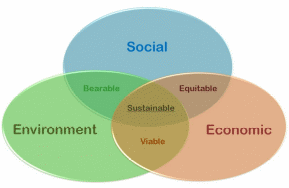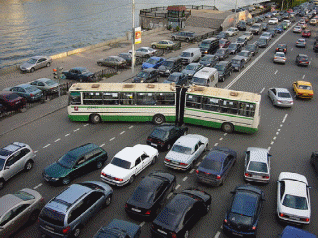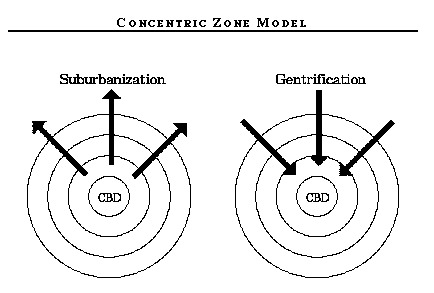Introduction
Increased human populations and growing environmental concerns have challenged conventional wisdom regarding urban planning and urban development. Consequently, many governments support the adoption of smart ways of development. Saudi Arabia is one place where the adoption of smart developmental ways has gained currency. This paper explores the adoption of smart ways in the city planning and urban development of Saudi Arabia by explaining the concept of city planning and the development of new cities. These new cities compare with old cities to identify the challenges and solutions of “old city” problems. This work proposes a series of recommendations to identify possible methods for solving some of these challenges.
Background
What is City Planning?
City planning is both a technical and political process that involves the organization and planned development of communities and urban centers. This process grew from disorderly developments that characterized urban growth in the 19th century (Yigitcanlar, 2009). Because city planning is a broad exercise, several disciplines are involved in the process, including architecture, strategic planning, and urban design (among others).
How to create a New City
Khalaf (2012) says “there once was a time when designing new cities was one of the most ambitious and urgent tasks for any urban designer and planner” (p. 27). However, with the onset of the 20th century, there has been a rapid development of new ideas and concepts for the development of new cities and urban planning. In fact, the proliferation of new ideas and concepts regarding the construction of new cities led to the development of new technocratic and ideological articles that similarly led to the development of new cities and towns around the world (Khalaf, 2012).
Most new cities have an articulate planning schedule, right from their inception to their execution. New cities contrast with old cities because old cities developed in an unplanned manner. Today, new cities have a specific concept in mind. For example, sustainability is an important concept informing the construction of new cities (Mezher, 2010). In fact, some governments construct cities with the concept of sustainability as their main motivation. This concept developed through the careful consideration of social, economic, and environmental concepts in urban planning as described below.

The world is littered with many examples of sustainable cities, but a key example is Masdar city in Abu Dhabi, which started in 2008 (Mezher, 2010).
A key feature for modern city planners who are engaged in modern city planning is energy use. For example, the use of “clean” technology is becoming an important factor in the construction of new cities because city planners now appreciate the importance of embracing new and sustainable technology for driving new cities (Mezher, 2010).
From this analysis, environmental consciousness is equally an important concept in understanding the construction of new cities because modern city planners now emphasize the importance of scientifically placing new city establishments to merge with the environment (Khalaf, 2012). For example, in Masdar city, the designers scientifically placed the linear parks to redirect winds into the city (Mezher, 2010). From this understanding, it is easy to see how city planners (especially in the MENA region) aim to integrate city establishments with environmental attributes.
Lastly, designers plan most new cities to be efficient. For example, city efficiency normally manifests in the design of the transport system so that the industry uses the least energy for transportation (in light of growing concerns regarding energy sustainability). Mezher (2010) says that new city developments now premise on three concepts that emphasize the importance of cities to be faster, better and cheaper. However, there is a huge financial burden associated with the construction of “greener” cities. Nonetheless, there is a consensus among most observers that this option is better than the alternative of sticking to traditional cities (United Nations, 2013).
Past Challenges
How Old Cities Developed
Traditionally, people built cities in an ad hoc fashion. Land conflicts and poor planning characterized most traditional cities because of the lack of careful planning. However, during the post-war period, ongoing global events such as the emergence of nation-states led to the development of new cities (mainly for the advancement of government functions).
Therefore, most traditional cities served as centers for government activities as countries invested a lot of money in constructing government infrastructure. Washington D.C for example demonstrates the huge investments made to build a working government infrastructure in America. Certainly, Yigitcanlar (2009) says Washington D.C contains many monumental buildings constructed during the emergence of the nation-state period.
In Saudi Arabia, people developed old cities with a careful religious connotation (because of the importance of religious elements in Saudi Arabia’s early urban history). For example, in the past, many people had a strong religious attachment to places of worship such as mosques and shrines. Most cities grew around such religious establishments (Khalaf, 2012).
Besides religious and government considerations, some old cities also developed through growing commercial interests. United Nations (2013) affirms that many old cities were located at strategic intersections of trade. Indeed, some commercial cities grew around marketplaces where traders exchanged goods from far-flung areas for other goods and services. Furthermore, during the agrarian revolution, traders would distribute surplus agricultural produce to cities for processing and distribution.
Venice, Hamburg, Lübeck, and London are classic examples of modern cities that started as commercial establishments. Some old cities therefore served strategic commercial interests. Comprehensively, most urban developments in old cities thrived on specific city functions. Indeed, through the above analysis, religious, government, and commercial functions informed the construction of old cities.
Problems in Old Cities
Transportation Difficulties
Increased population pressures and its resultant strain of city infrastructures have created many problems for old cities. Transportation is one such problem because unlike most modern cities, which have amazing roads and pathways, traditional cities had narrow roads and pathways that could contain minimal traffic of goods and people. This problem grew in the 20th century when there was a rapid increase in the number of cars in the city. This eventually led to traffic jam problems as shown below

Many urban authorities have tried to mitigate this problem in several ways, including charging people to drive their cars in cities (as a London mayor recently did) (United Nations, 2013).
Infrastructure Problems
Old cities also had significant infrastructure problems because rapid urban growth in the 19th century created significant social problems, which were associated with overcrowding, pollution and disease (Khalaf, 2012). The spread of disease in overcrowded urban areas led to the development of global studies to investigate this phenomenon. The studies drew a strong link between impure water and the spread of diseases in overcrowded urban areas (United Nations, 2013). Consequently, many urban authorities established adequate sewer and water systems that would mitigate this problem.
Housing
Yigitcanlar (2009) says that the housing problems facing most old cities are largely alike. In the past, people lived in bad housing structures that lacked proper sanitation and electricity because of population explosion and the failure for housing investments to keep up with this trend. This problem grew when governments lacked adequate funds to construct modern apartments that could meet the pressure of growing human populations (mainly from rural to urban areas). This problem exists in most parts of the world.
Weather Problems
The design of old buildings lacked a careful attention to weather uncertainties and adverse environmental effects. City infrastructures also never contained effective mitigation features that would withstand adverse weather conditions.
As a result, historians cite many cases where building infrastructures such as roads and bridges have collapsed under adverse weather conditions (Crick, 2012). Modern buildings have however tried to address such weaknesses through the adoption of new technologies. For example, most modern buildings (in earthquake prone areas) are earthquake resistant. This development outlines architectural modifications that inform modern urban planning.
Current Challenges
What are the Challenges?
Several challenges outline the process of urban city development in Saudi Arabia. However, the energy crisis, unpredictable economic conditions, environmental concerns, and limited finances stand at the top of this list (United Nations, 2013). For example, financing ambitious city development projects prove to be a difficult task especially for governments that do not have sufficient funds to undertake such projects. This financial crisis worsens through unpredictable economic conditions. Moreover, such challenges interconnect in a way that makes it difficult to isolate one problem from another.
Problems that need Solutions
Old buildings
Solving the problem of old buildings in Saudi Arabia takes a dual approach. The first approach involves demolishing these old structures to make way for new ones and the second approach involves renovating the old buildings (Awal, 2013). Saudi Arabia has attempted the second approach because most building owners in some metropolitan areas of Saudi Arabia have renovated their old buildings for maximum use.
For example, the municipalities have allowed some building owners to add more floors on existing buildings for maximum use. In Jeddah alone, the government issued more than 17,000 licenses to owners of old buildings to renovate their structures (Awal, 2013). Alternatively, instead of demolishing and renovating the buildings, Awal (2013) proposes that the government may preserve old buildings, which have a rich cultural value, as unique cultural and architectural structures.
Researchers who support this suggestion use the unique religious architecture found in Saudi Arabia and the wider Middle East as a justification for the preservation of old buildings as cultural artifacts (Khalaf, 2012). Old building preservation is however not a new phenomenon because the government has restored several buildings in Saudi Arabia. For example, the government has restored the historic Naseef house (in Jeddah) (Lafforgue, 2012).
Population Growth and Traffic Jams
Investing in mass transportation is the best way for solving traffic jams in congested cities. Most developed nations have adopted this model with a high degree of success (Yigitcanlar, 2009). Through the construction of railway stations and the introduction of large capacity vehicles, the volumes of vehicle traffic on Saudi roads are bound to reduce.
Slow Construction
Construction delays in Saudi Arabia have caused several inconveniences that spun through inflated budgets and extensive project delays. There are several reasons that may lead to construction delays. However, since commercial disputes and bureaucracies inform some of these delays, it is vital to streamline procedural limitations to increase construction efficiencies (Yigitcanlar, 2009).
The Saudi government should therefore investigate the main reasons for the occurrence of these delays and try to eliminate them, procedurally. Yigitcanlar, (2009) even proposes that when signing contractual agreements, the government should introduce a clause that penalizes contractors who report unjustified delays.
Recommendations
For Old Cities
It is relatively difficult to transform old cities into new cities. Some countries have tried to renovate some old cities to meet today’s standards of urban planning, but high financial costs and extreme opposition from some stakeholders have hindered such efforts (Yigitcanlar, 2009). In light of such challenges, it is crucial to find an alternative solution for the alleviation of old city problems.
Suburbanization is one such solution. Suburbanization is a concept that evolved from the declined satisfaction with urban development (Yigitcanlar, 2009). This concept contrasts with gentrification, which aims to congest cities. The diagram below shows the difference between the two concepts

Adopting the concept of suburbanization involves the construction of satellite urban centers in old cities to cater for growing urban city problems. Through such an initiative, it would no longer be necessary to overcrowd cities for services that would otherwise exist in the satellite urban centers.
For Building a new City
Besides securing adequate financing for constructing new cities, it is crucial to embrace a collaborative approach when designing and building new cities. The collaborative approach focuses on including all stakeholders in modern city planning so that urban development becomes a comprehensive process. This way, it would be easy to tackle most challenges that hinder modern urban planning. For example, by involving environmentalists in the urban planning process, it would be easier to circumnavigate environmental issues by developing new cities that are environmentally sensitive.
Conclusion
This paper draws on several historic and current lessons regarding urban planning from around the world. Indeed, the challenges facing older cities (globally) mirror the same challenges facing old cities in Saudi Arabia. However, through the ambitious vision of the Saudi Arabian government, there is a clear direction towards the adoption of smart ways for the construction of modern cities. The construction of modern cities, such as King Abdullah Economic City, is one example of the adoption of smart ways in the Saudi Arabian urban planning process (Khalaf, 2012).
However, from the harsh lessons and challenges discovered through an analysis of old cities, it is vital for Saudi Arabia to adopt a comprehensive approach in modern city development as outlined in the “recommendations” section of this work. Through a collaborative approach in urban planning, it would be easy for city planners to expect future challenges and avoid them. Nonetheless, for existing city infrastructures, it is vital to renovate some of these establishments and demolish the rest to pave way for new and sustainable developments. These processes outline the smart ways to drive Saudi Arabia’s city planning processes.
References
Awal, J. (2013). Reconstruction of old buildings to increase housing units by 40%. Web.
Crick, A. (2012). Bad Weather Causes A Whole Load Of Problems.
English-Online. (2012). Cities. Web.
IZR. (2012). Socially Sustainable Development. Web.
Khalaf, R. (2012). Traditional vs modern Arabian morphologies. Journal of Cultural Heritage Management and Sustainable Development, 2(1), 27 – 43.
Lafforgue, E. (2012). Old Jeddah buildings – Saudi Arabia. Web.
Mezher, T. (2010). An overview of CSR in the renewable energy sector: Examples from the Masdar Initiative in Abu Dhabi. Management of Environmental Quality: An International Journal, 21(6), 744 – 760.
Park, E. (2012). Suburbanization and Gentrification.
United Nations. (2013). Challenges to sustainable development.
Yigitcanlar, T. (2009). Planning for knowledge-based urban development: global perspectives. Journal of Knowledge Management, 13(5), 228 – 242.